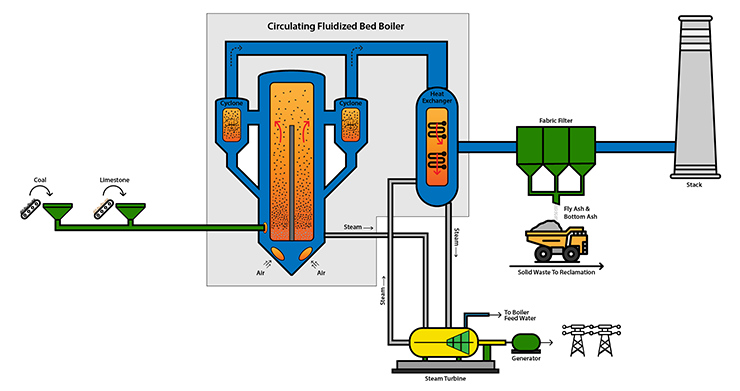The Cogeneration Process
Waste Coal is Processed
Steam is Generated
Steam Propels Turbine
Cogeneration Occurs
Steam Returns to Water
Waste Coal is Processed
In the 120-foot-high furnace a large fluidized (lava like) mass of waste coal, limestone, and air burns in suspension. The fuel/air mixture burns at a temperature of 1650 degrees and the fluid bed technology provides the most complete combustion and lowest emissions for this type of fuel. Pulverized limestone is mixed with the fuel to control emissions by neutralizing the sulfur.
Steam is Generated
Purified water is pumped through waterwall pipes in the boiler where the water is turned into steam by the heat. The steam reaches temperatures of up to 900 degrees Fahrenheit and pressures up to 1,000 pounds per square inch, and is collected in the steam drum section of the boiler.
Steam Propels Turbine
From the steam drum the steam is piped to the turbine. The pressure of the steam pushing against a series of turbine blades turns the turbine shaft. The turbine shaft is connected to the shaft of the generator, where magnets embedded in the generator shaft spin within wire coils to produce electricity.
Cogeneration Occurs
After doing its work in the turbine, excess heat is used to provide a secondary customer heat and hot water. In addition, the Mount Carmel Cogeneration facility provides heat and hot water to an adjacent 10-acre greenhouse.
Steam Returns to Water
The steam is drawn into a condenser where the steam is condensed back into purified water. The condenser is a large heat exchanger with many tubes normally connected to a cooling tower or cooling water source. The cool water in the tubes converts the steam back into water that can be used over and over again in the plant process.
